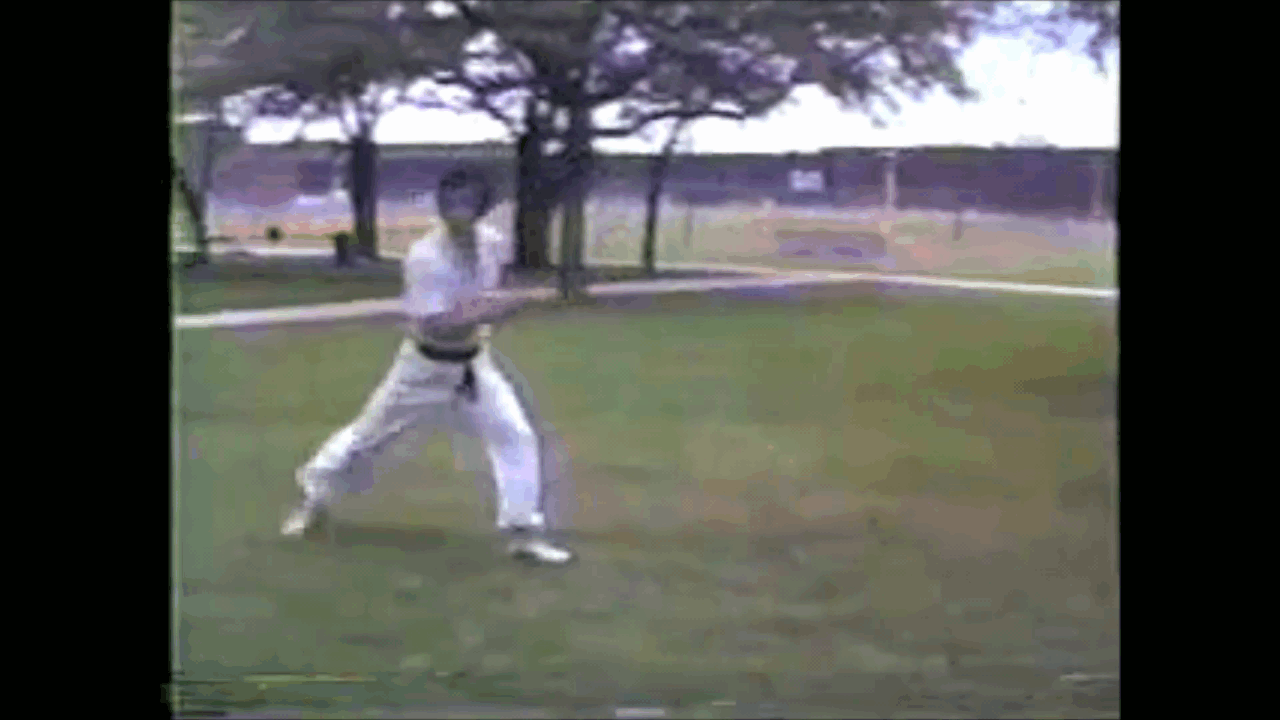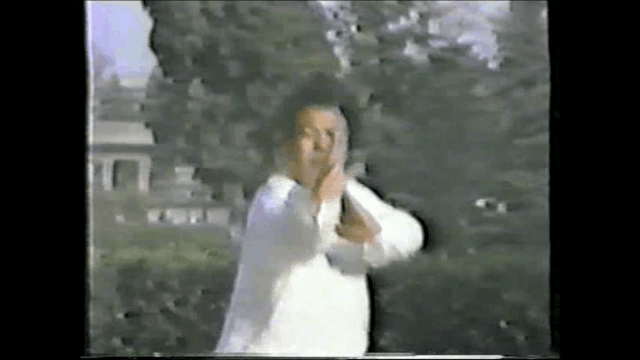This kind of circular punches doesn't exist in many MA systems. Why?
Your thought?
Your thought?
Follow along with the video below to see how to install our site as a web app on your home screen.
Note: This feature may not be available in some browsers.
This kind of circular punches doesn't exist in many MA systems. Why?
Your thought?
Several reasons:
The way I see it, techniques are "balanced" around how fast they are, how strong they are, and how defensive you remain while using them. This type of technique pretty much fails at all three. It could be used:
- Slower than a less-looping punch
- Leave you much wider open
- Not as powerful as a punch that actuates the elbow (I've tested this motion on my StrikeMeter and it did not perform well)
Better techniques include:
- To get around a person's guard. But a less-looping punch can do that too, or if their guard is that far out, a straight punch will be better.
- To get around an obstacle (for example, if they have grabbed your friend and are behind them). This is a very niche use.
- To loop around and set up a grab, which a less-looping punch can do, too.
- Long range hook, which loops just enough outside the guard but is otherwise thrown similar to a straight punch
- Inverted back fist, in which the hand will follow a similar circular motion, but from the elbow instead of the shoulder
- Inward hammerfist/chop, which will start chambered and give you a faster, more linear motion
This is from the long fist system point of view.I'd love to hear from someone who does an art that utilizes this kind of punch as to why they use it.

Having thrown a lot of these things speed isn't as big of an issue as one may think. There are things about circular punches that decreases the response time of the person that I'm attacking. If I can decrease your response time, then there's no need to be faster than a jab. The picture below shows me using a punch similar to the video that Wang Posted. This is a screen shot from a video of me sparring around 40% speed and power. There's no way my partner can punch me with a reverse punch before I hit him.Slower than a less-looping punch
Yes but not really. If you follow the techniques that are taught then you aren't open. The techniques just make you look open so that the opponent changes his mind, by the time you see that you think I'm open, something else is already on the way. You won't be able to block it because you are focused on trying to hit my "open defense" instead of dealing with the on coming attack.Leave you much wider open
These are actually about as powerful a punch that you are going to get. If you aren't getting any serious power of the punch then it's because you aren't connecting all the points of energy that you need to generate power in the punch.Not as powerful as a punch that actuates the elbow
Long arm techniques don't care about getting around the guard. When schools train them, they actually train them to punish the guard. If I'm fighting Jow Ga vs Jow Ga, then I'm going to be sneaky, because they know the punch. If I'm fighting Jow Ga vs something else then I'm going to destroy the guard. Because I know that your forearms are probably less conditioned compared to mine. So I'll use that to my advantage. After a few strikes to your arms, you won't have a guard. If you catch on to what I'm doing then I'll switch it up on you. But by default all schools that use those types of punches take pride in beating the mess out of someone's guard. I'm not sure if you seen videos of me sparring with this guy, but you'll see him blasting away at my guard. If he can't get to my head then he'll take my arms.To get around a person's guard. But a less-looping punch can do that too, or if their guard is that far out, a straight punch will be better.
This is an understatement. It's really good against multiple attackers.It can be a good tool to be used in street fight that you have to deal with multiple opponents.
Easy. 6 million ways fight choose one.This kind of circular punches doesn't exist in many MA systems. Why?

Agree! It includes a full body rotation. IMO, to use full body rotation in circular punch is much easier than to use hip rotation in straight punch.Circular punches like that, if done right, will tear your head off. Really powerful stuff.

I think it's just easy for you because of your experience. You've been in Martial Arts for a long time. The students I taught and train had a really difficult time with using the body. That experience with the students makes me think that it's really difficult for some.o use full body rotation in circular punch is much easier than to use hip rotation in straight punch.
I think hip rotation is just another variant of full body rotation. If it’s driven from the feet and the torso rotates with the hip, then it’s full body, just on a shorter scale. I tend to see this on a continuum. Complete and big full-body on one end, just shoulder and arm on the other. And lots in between.Agree! It includes a full body rotation. IMO, to use full body rotation in circular punch is much easier than to use hip rotation in straight punch.
In another thread, people discuss the use of SW. Should one use full body rotation in circular punch? The answer is yes. There will be no argument on that at all.
I like his 45 degree downward circular punch, and 45 degree upward circular punch. It's more effective than just simple horizontal circular punch. A 45 degree downward circular punch can be changed into either a head lock, or a spiral punch.

I think it's just easy for you because of your experience. You've been in Martial Arts for a long time. The students I taught and train had a really difficult time with using the body. That experience with the students makes me think that it's really difficult for some.
This is from the long fist system point of view.
- You throw a back fist, your opponent blocks it.
- You change your back fist into a grab and pull.
- You then throw an over hook with the other arm.
At 0.30 - 0.40.
- You are in a group fight.
- You use circular punches to create space.
- You then back up away from your opponents.

Having thrown a lot of these things speed isn't as big of an issue as one may think. There are things about circular punches that decreases the response time of the person that I'm attacking. If I can decrease your response time, then there's no need to be faster than a jab. The picture below shows me using a punch similar to the video that Wang Posted. This is a screen shot from a video of me sparring around 40% speed and power. There's no way my partner can punch me with a reverse punch before I hit him.
Yes but not really. If you follow the techniques that are taught then you aren't open. The techniques just make you look open so that the opponent changes his mind, by the time you see that you think I'm open, something else is already on the way. You won't be able to block it because you are focused on trying to hit my "open defense" instead of dealing with the on coming attack.
These are actually about as powerful a punch that you are going to get. If you aren't getting any serious power of the punch then it's because you aren't connecting all the points of energy that you need to generate power in the punch.
With all due respect, I do not believe that you understand circular punches as they are done in Southern Chinese martial arts. That is ok because it is something you have not studied. So it is not a dig at you.This is why forms are just called dances by a lot of arts, especially the more flashy kung fu forms.
I'm going to call BS on this. Going at 40% there's no way to hit you with a straight punch? You're posting stills to back this up instead of video. It also looks like you're throwing a long hook instead of a circular punch.
The circular punch is the type of punch that TKD and Karate get a lot of flack for being the only type of punch they expect an opponent to throw. You know...one that is telegraphed, has a wide angle that makes it slow, and then hangs there for a second without retracting the arm (which makes it easy to grab the arm).
Um...what? Your opponent has ample time to block, and then counter-attack because these punches tend to not retract as fast. Or he can counter before you hit. If you're basing it on "my opponent has so many choices he doesn't know what to do and gets stuck analyzing it", then that's bad. Anyone who is trained in a sport art is just going to throw a straight or a teep and get you before you land the punch. Anyone who takes a TMA is going to block and counter-attack.
Unless your system is, "I'm going to fight so badly I'll lull my opponent into letting their guard down, and that's how I will hit them." Which is basically what you described.
Like I said, I've tested it on a strike meter. The wide, circular motion was nowhere near what the straighter punches were.
The wide motion limits the rotational velocity. By not actuating the elbow, you're isolating the muscles that are being used. This uses a similar motion as the chest fly. The standards for chest fly on a 200-pound person range from 19 pounds (beginner) to 124 pounds (elite). The standards for dumbell bench press (the motion used in a straighter punch) are 45 to 176 pounds.
If you're knocking people with the wide punch, you'll hit them harder with the straighter punch.
This seems like a classic example of "good is the enemy of great." If it works, you assume it can't be improved upon.
...If you're knocking people with the wide punch, you'll hit them harder with the straighter punch.
